
Electronic measurement provider Keysight (NYSE: KEYS) reported Q1 CY2025 results exceeding the market’s revenue expectations, with sales up 7.4% year on year to $1.31 billion. Guidance for next quarter’s revenue was better than expected at $1.32 billion at the midpoint, 1.4% above analysts’ estimates. Its non-GAAP profit of $1.70 per share was 3.3% above analysts’ consensus estimates.
Is now the time to buy Keysight? Find out by accessing our full research report, it’s free.
Keysight (KEYS) Q1 CY2025 Highlights:
- Revenue: $1.31 billion vs analyst estimates of $1.28 billion (7.4% year-on-year growth, 1.8% beat)
- Adjusted EPS: $1.70 vs analyst estimates of $1.65 (3.3% beat)
- Revenue Guidance for Q2 CY2025 is $1.32 billion at the midpoint, above analyst estimates of $1.30 billion
- Adjusted EPS guidance for Q2 CY2025 is $1.66 at the midpoint, below analyst estimates of $1.69
- Operating Margin: 15.8%, up from 14.6% in the same quarter last year
- Free Cash Flow Margin: 35%, up from 6.1% in the same quarter last year
- Market Capitalization: $28.13 billion
Company Overview
Spun off from Hewlett-Packard in 2014, Keysight (NYSE: KEYS) offers electronic measurement products for use in various sectors.
Sales Growth
A company’s long-term performance is an indicator of its overall quality. Any business can experience short-term success, but top-performing ones enjoy sustained growth for years. Unfortunately, Keysight’s 4% annualized revenue growth over the last five years was sluggish. This was below our standard for the industrials sector and is a poor baseline for our analysis.
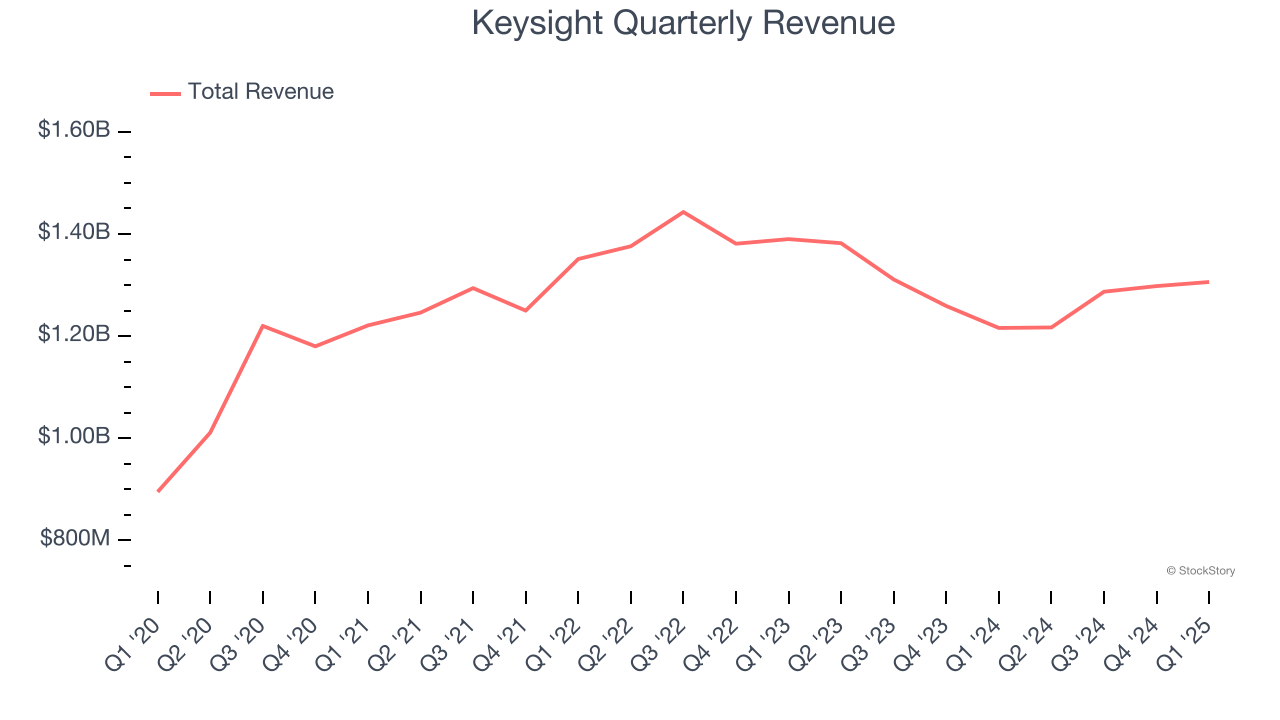
Long-term growth is the most important, but within industrials, a half-decade historical view may miss new industry trends or demand cycles. Keysight’s performance shows it grew in the past but relinquished its gains over the last two years, as its revenue fell by 4.4% annually. Keysight isn’t alone in its struggles as the Inspection Instruments industry experienced a cyclical downturn, with many similar businesses observing lower sales at this time. 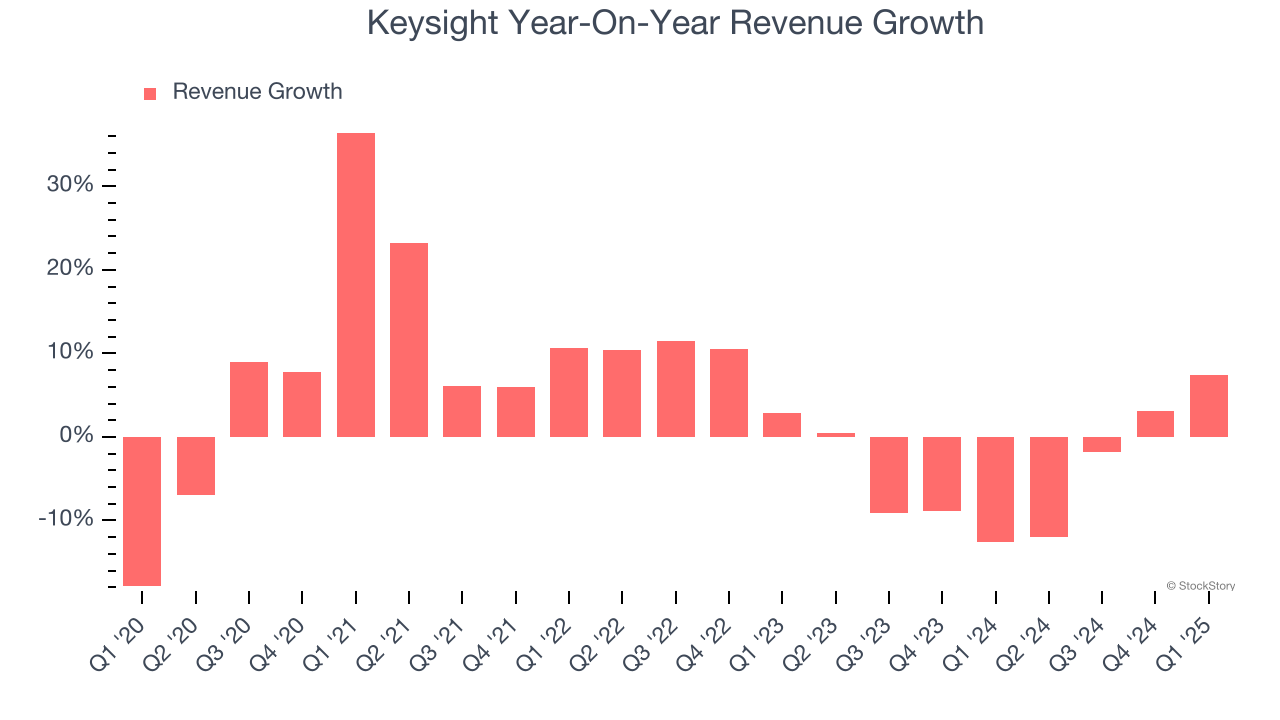
This quarter, Keysight reported year-on-year revenue growth of 7.4%, and its $1.31 billion of revenue exceeded Wall Street’s estimates by 1.8%. Company management is currently guiding for a 8.1% year-on-year increase in sales next quarter.
Looking further ahead, sell-side analysts expect revenue to grow 4.9% over the next 12 months. While this projection implies its newer products and services will spur better top-line performance, it is still below the sector average.
Here at StockStory, we certainly understand the potential of thematic investing. Diverse winners from Microsoft (MSFT) to Alphabet (GOOG), Coca-Cola (KO) to Monster Beverage (MNST) could all have been identified as promising growth stories with a megatrend driving the growth. So, in that spirit, we’ve identified a relatively under-the-radar profitable growth stock benefiting from the rise of AI, available to you FREE via this link.
Operating Margin
Operating margin is one of the best measures of profitability because it tells us how much money a company takes home after procuring and manufacturing its products, marketing and selling those products, and most importantly, keeping them relevant through research and development.
Keysight has been a well-oiled machine over the last five years. It demonstrated elite profitability for an industrials business, boasting an average operating margin of 21.4%. This result isn’t surprising as its high gross margin gives it a favorable starting point.
Looking at the trend in its profitability, Keysight’s operating margin decreased by 2.7 percentage points over the last five years. This raises questions about the company’s expense base because its revenue growth should have given it leverage on its fixed costs, resulting in better economies of scale and profitability.
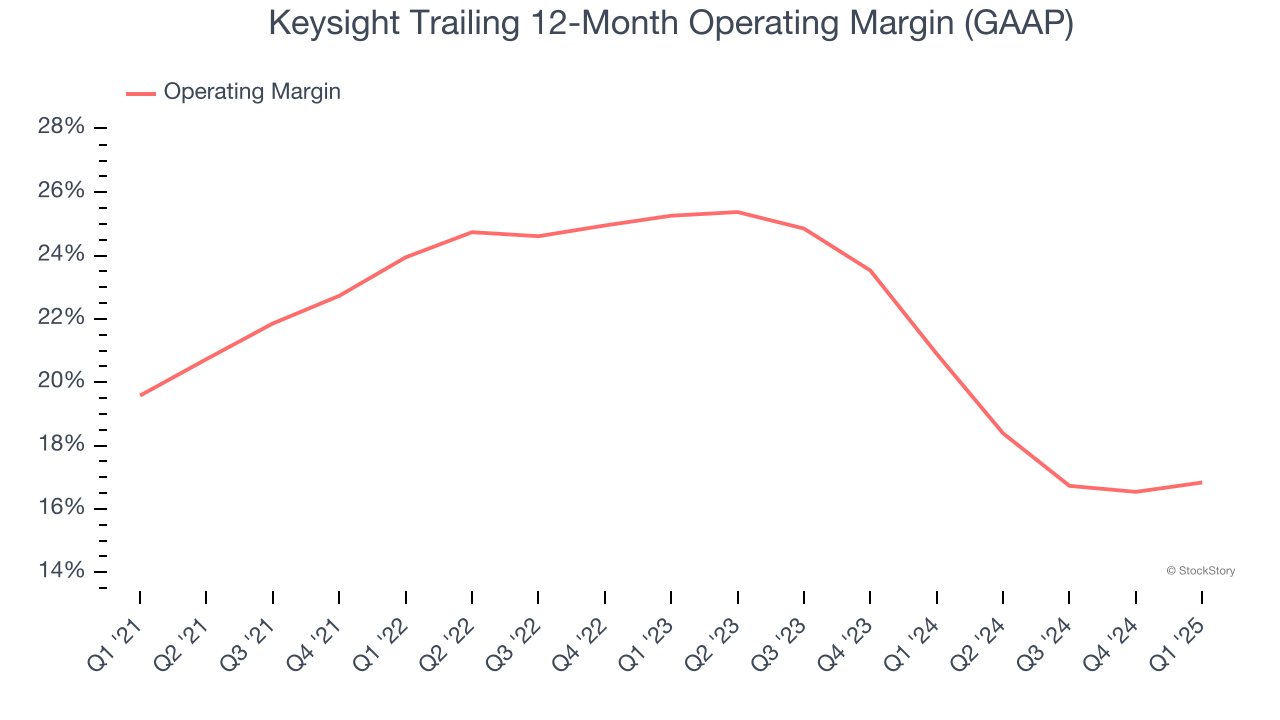
In Q1, Keysight generated an operating profit margin of 15.8%, up 1.3 percentage points year on year. The increase was encouraging, and because its operating margin rose more than its gross margin, we can infer it was more efficient with expenses such as marketing, R&D, and administrative overhead.
Earnings Per Share
Revenue trends explain a company’s historical growth, but the long-term change in earnings per share (EPS) points to the profitability of that growth – for example, a company could inflate its sales through excessive spending on advertising and promotions.
Keysight’s EPS grew at an unimpressive 7.8% compounded annual growth rate over the last five years. This performance was better than its flat revenue but doesn’t tell us much about its business quality because its operating margin didn’t expand.
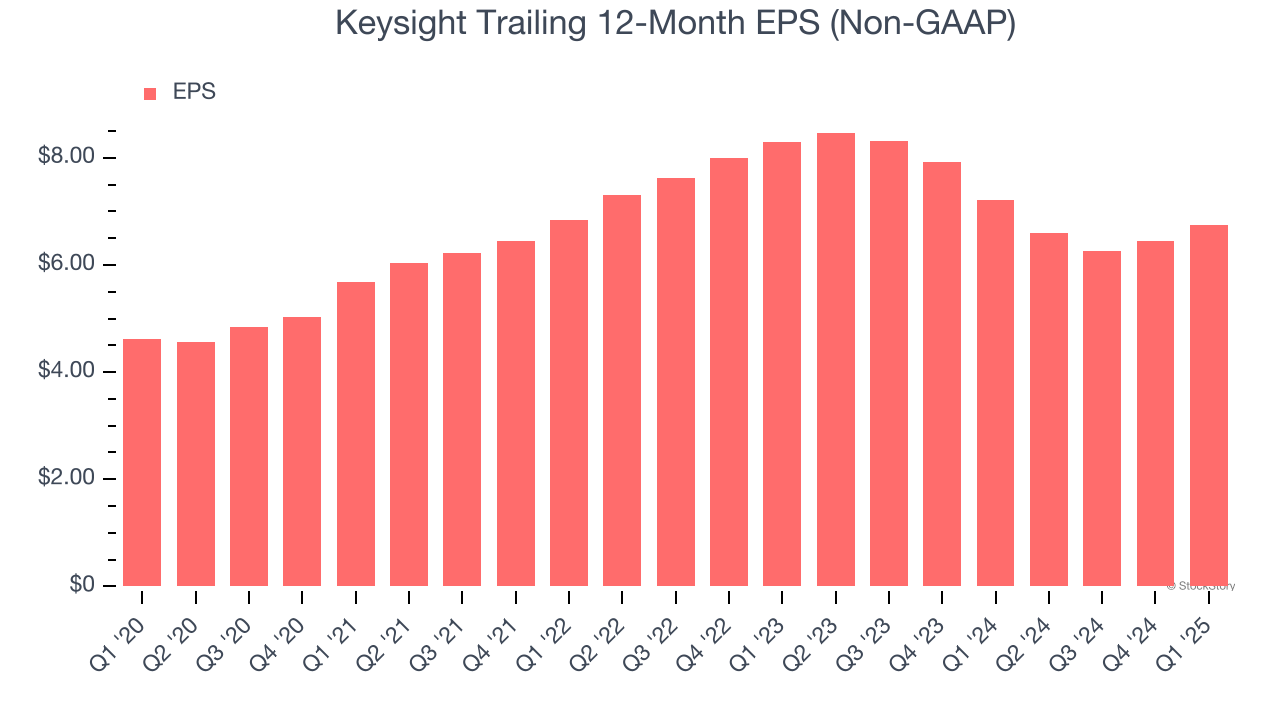
Diving into the nuances of Keysight’s earnings can give us a better understanding of its performance. A five-year view shows that Keysight has repurchased its stock, shrinking its share count by 8.5%. This tells us its EPS outperformed its revenue not because of increased operational efficiency but financial engineering, as buybacks boost per share earnings. 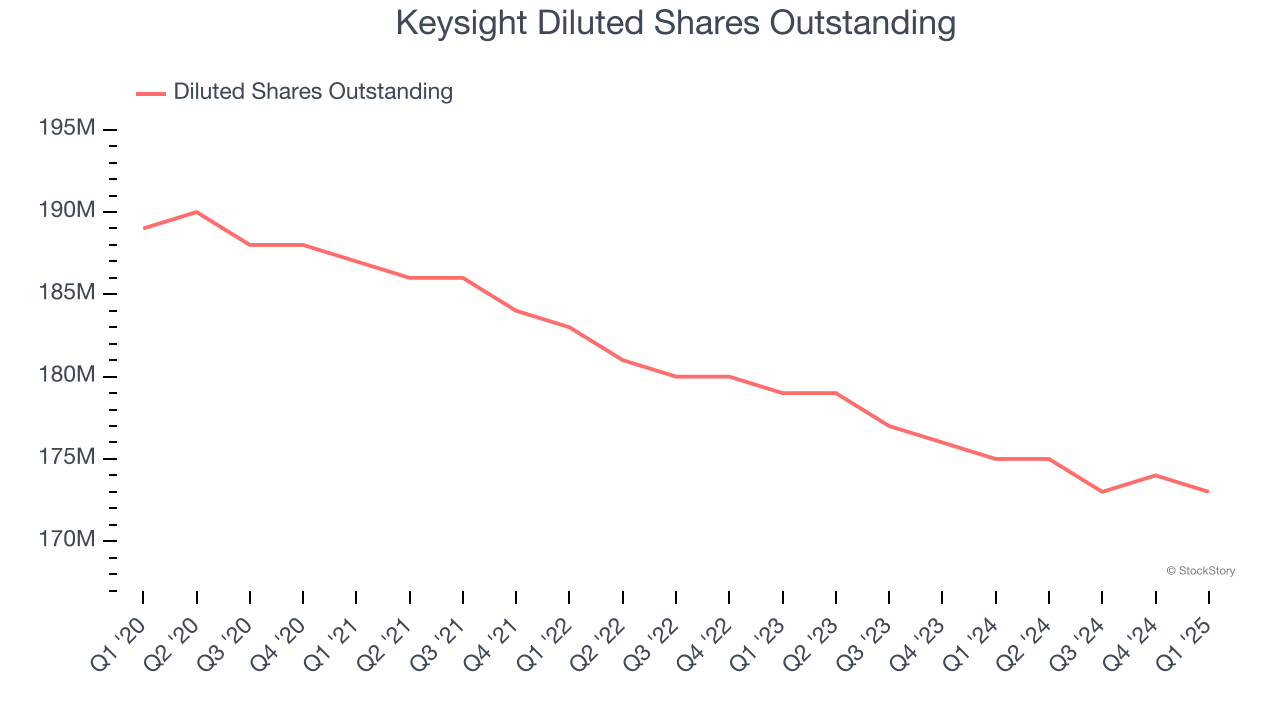
Like with revenue, we analyze EPS over a more recent period because it can provide insight into an emerging theme or development for the business.
For Keysight, its two-year annual EPS declines of 9.8% show it’s continued to underperform. These results were bad no matter how you slice the data.
In Q1, Keysight reported EPS at $1.70, up from $1.41 in the same quarter last year. This print beat analysts’ estimates by 3.3%. Over the next 12 months, Wall Street expects Keysight’s full-year EPS of $6.74 to grow 8.2%.
Key Takeaways from Keysight’s Q1 Results
We enjoyed seeing Keysight beat analysts’ revenue and EPS expectations this quarter. We were also glad its revenue guidance for next quarter slightly exceeded Wall Street’s estimates. On the other hand, its EPS guidance for next quarter missed. Still, this print had some key positives. The stock traded up 3.4% to $168.03 immediately following the results.
Keysight may have had a good quarter, but does that mean you should invest right now? The latest quarter does matter, but not nearly as much as longer-term fundamentals and valuation, when deciding if the stock is a buy. We cover that in our actionable full research report which you can read here, it’s free.





